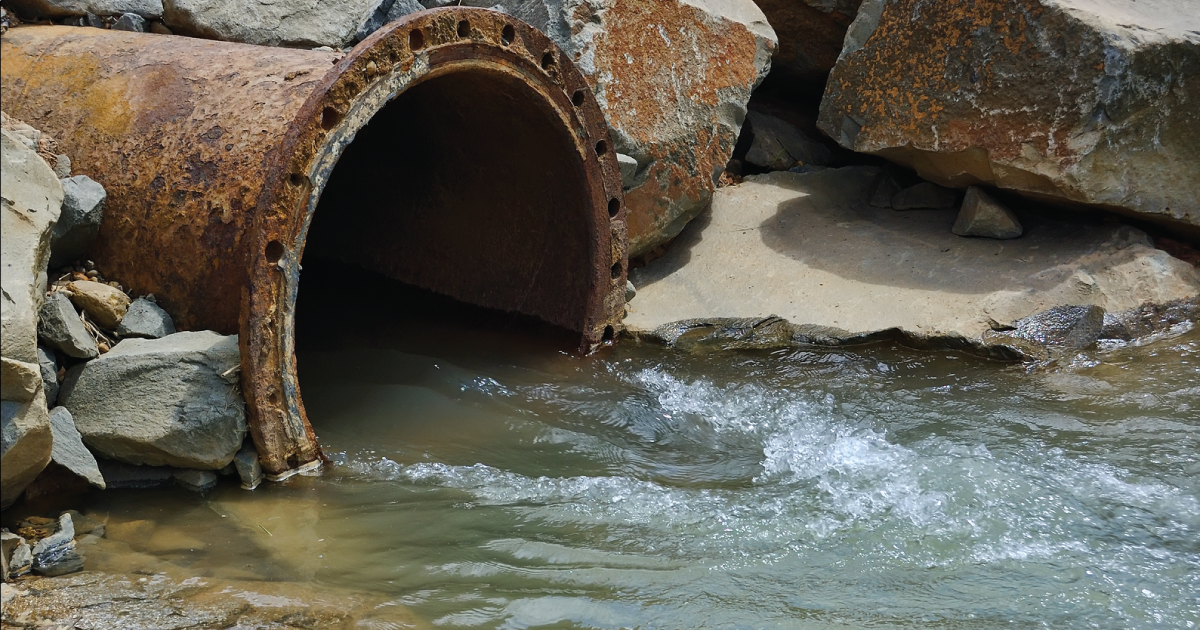
Drain Tiling, the Hidden Accelerator of Water Pollution
Where the Mississippi River runs through Iowa, The Wall Street Journal points to artificial tile drainage being a major problem. It’s believed a majority of Iowa’s farmland has artificial drainage that increases the speed at which excess nutrients are delivered into the river, and ultimately the Gulf, which the Mississippi River empties into.
July 23, 2019 | Source: Mercola.com | by Dr. Joseph Mercola
I’ve written many articles discussing how industrial agriculture is a primary source of water pollution and toxic algae growth that result in huge dead zones where all aquatic life is suffocated.1 There are 18 major river basins2 in the continental U.S., with the largest belonging to rivers that feed the Mississippi River,3 currently the seventh-most polluted river in the world.4
A July 2, 2019, presentation5 in The Wall Street Journal offers an in-depth look at how agricultural expansion is driving the Mississippi River’s demise. You can scroll through fact boxes for each section of the river, starting in the north and moving all the way down to the Gulf.
Where the Mississippi River runs through Iowa, The Wall Street Journal points to artificial tile drainage being a major problem. It’s believed a majority of Iowa’s farmland has artificial drainage that increases the speed at which excess nutrients are delivered into the river, and ultimately the Gulf, which the Mississippi River empties into.
Dead zone in Gulf of Mexico keeps growing
Whatever enters a waterway upstream will travel downstream, and this includes runoff from agricultural lands. As explained by the U.S. Environmental Protection Agency:6
“Farmers apply nutrients on their fields in the form of chemical fertilizers and animal manure … [W]hen nitrogen and phosphorus are not fully utilized by the growing plants, they can be lost from the farm fields and negatively impact air and downstream water quality.”
With the high levels of spring and summer rains seen in many parts of the Midwest this year, the National Oceanic and Atmospheric Administration estimates7 the summer 2019 dead zone in the Gulf of Mexico will reach roughly 7,829 miles, which is about the size of Massachusetts, and bigger than the 5,770 square-mile, five-year average size.
According to The New Food Economy,8 Independence Day festivities had to be canceled in many Mississippi beach areas as toxic algae had taken over, making water play too risky a venture. The algae bloom also killed all the oysters in one of the state’s harvesting regions.
Drain tiling, the hidden accelerator of water pollution
The speed of agricultural runoff is largely dictated by poor soil conditions that prevent water retention, but artificial drainage also appears to play a decisive role, adding to the problem by speeding up the runoff. As noted by Carleton College in Minnesota, tile drainage “provides an expressway by which water on the fields is drained away …”9
Drain tiling is a relatively unknown agricultural strategy, despite having been done for decades. In a nutshell, it involves installing a network of subsurface drainage tubes 2 to 4 feet below ground to siphon off excess water. As explained by Mike Winslow, staff scientist with the Lake Champlain Committee:10
“Groundwater flows through the pipes rather than the soil, because the pipes offer a pathway of least resistance. As a result, the groundwater table is lowered to the depth of the pipes thus ensuring that a crop’s roots won’t become water logged, and that fields drain earlier in the spring. The pipes are usually oriented to discharge into a nearby stream, though in some cases, the discharge may just be to an area lower in elevation.”
According to the Des Moines Register, about half of Iowa’s cropland would be unsuitable for farming were it not for drain tiling,11 as the water table is too close to the soil surface.
By lowering the water table, crops are able to develop deeper root systems, which augments growth. Chris Jones, a research engineer with The University of Iowa, cites research suggesting drain tiling can increase crop yields by 30% or more.12
According to the Des Moines Register,13 much of subterranean drainage in the U.S. was installed during the 1920s through 1940s. However, in recent years, there’s been a significant uptick in the practice, and it’s not entirely known just how much of our farmland is being artificially drained into our waterways.
As reported by the Twin Cities Pioneer Press,14 the Bois de Sioux Watershed District approved 2.9 miles of drain tile to be installed in 1999. Ten years later, in 2009, permits had risen to 779.3 miles, and in 2011, permits for 1,558.3 miles were handed out.
“While tiling data aren’t nearly as precise elsewhere, the surge is beyond dispute,” Pioneer Press notes,15 adding that, “In some places, grassy areas that once harbored wildlife are being plowed under and tiled to plant corn and soybeans.”
